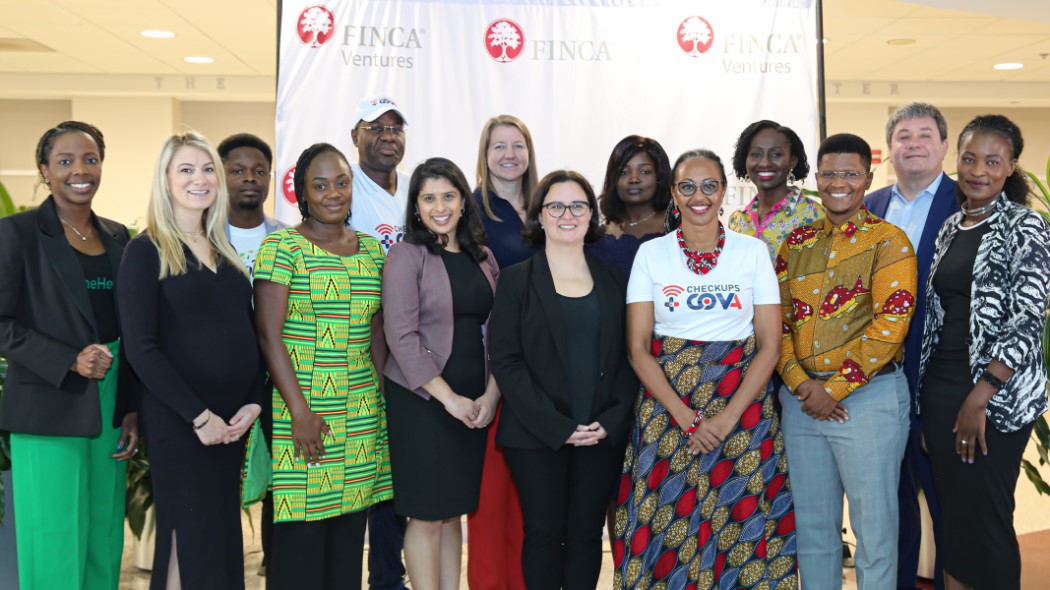Beyond Trade-offs is an ImpactAlpha podcast series, produced in partnership with Omidyar Network, in which impact investors look across the returns continuum at investment strategies to scale capital for impact.
- Interactive infographic. Explore each investor’s portfolio along the continuum of returns.
- Catch up. Take a spin through the full “Beyond Trade-offs” podcast series.
- Don’t miss an episode. Subscribe to ImpactAlpha’s podcasts on iTunes, Spotify, SoundCloud or Stitcher.
- Read the collection of essays on The Economist digital hub last year.
ImpactAlpha, May 20 – Foundations command a combined $900 billion in the U.S., and more than $1.5 trillion globally. No other class of asset owners should be more predisposed to move “beyond trade-offs” than philanthropies, which have a legal mandate and tax obligation to benefit society, as well as a presumably charitable original intent.
Most philanthropies, however, still keep their endowment investment activities separate from programmatic and grantmaking strategies, which typically command only about 5% of total assets each year. The trade-off between financial returns and social impact is enshrined in the organizational structure of most foundations, which keep the investment office separate from the philanthropy’s mission.
Now, the emergence of institutional-grade impact investment strategies has brought into the open the social impact and environmental sustainability of that other 95% of foundation assets.
“We’re talking about endowments here,” Omidyar Network’s Robynn Steffen said in the kick-off to ImpactAlpha’s Beyond Trade-offs series of podcasts. “In a world where you can see that there is significant impact that can be achieved alongside those returns, serious philanthropists can’t afford to leave that impact on the table.”
Ford Foundation to tap endowment for $1 billion to fight injustice and inequality
Fewer than two dozen of the thousands of philanthropies commit even part of their endowments to “mission-related investments.” The biggest mandate so far is the Ford Foundation’s $1 billion carveout from its $13 billion endowment. Spread over 10 years, the commitment amounts to about $100 million each year. That impact will be multiplied if Ford’s example spurs other foundations to finance vastly more social good.
“We’re trying to prove that it is possible to generate both financial returns that would be appropriate for endowments….and social returns,” says Roy Swan, who lead’s Ford’s mission-related investing effort, in the latest episode of ImpactAlpha’s Beyond Trade-offs series of podcast, produced with Omidyar Network.
Swan joined Ford last year after a decade at Morgan Stanley, where he co-headed the global sustainable finance group. In two years at Ford, he says, the team has found sectors aligned with Ford’s focus on social justice that are mature enough to accomodate large pools of capital and have some track record of success. Ford recently committed to LeapFrog Investment’s $700 million third fund for healthcare and financial services for emerging consumers in Africa and Asia, defined as those living on less than $10 a day.
“Our goal is to demonstrate that there are investment opportunities available that have returns on capital profiles that would fit risk-adjusted return-on-capital expectations for many investors” (read, “Scaling Capital for Good,” by the Ford Foundation’s Roy Swan, Christine Looney and Darren Walker, on The Economist’s digital hub.)
Risk perceptions
The common thread through much of the $130 million of the $1 billion that Ford has allocated so far: a gap between actual and perceived risks. “Risk-adjusted,” after all, is a key part of risk-adjusted market rates of return. Some lower-return opportunities may be well-priced for the risks they represent. “We know what our risk appetite is for our mission-related pool of capital,” Swan says. “That’s a really helpful first step.”
Affordable and workforce housing, for example, are among the most stable asset classes in real estate. Ford has focused on multi-family rental housing funds. With long waiting lists, low vacancy rates and stable tenants, such projects are increasingly considered low-risk, long-term investments. While high-rent luxury housing is subject to the rise and fall of financial markets, affordable housing performed strongly during the 2008 financial crisis, when vacancies fell.
The best affordable-housing developers are integrating social services and creating environments to build community and increase retention. Some are adding after-school programs, preventive health care, job fairs and farmers’ markets.
“We could allocate the full billion to affordable housing if we wanted to,” says Christine Looney, deputy director of the mission-related investing program. “There is significant product available through which we could invest right now.”
The thesis of Ford’s “quality jobs” investment strategy is that competitive companies need employees who are engaged in a superior way, which requires superior human capital investment. A leading champion of the approach is Zeynep Ton, president of the nonprofit Good Jobs Institute, which has assembled case studies of companies that pay employees more, are more productive and more profitable. Ford recently invested in the fourth fund of HCAP Partners, a San Diego-based manager of about $300 million in assets with an explicit strategy of job improvement.
“The more people that are productively engaged in the economy, the better off all of us are. There’s more job creation for everyone,” Swan says. “The more jobs and high-quality jobs, the better.”
Ford’s mission-related team is seeking to change not only what gets invested in, but who does the investing. Only about 1% of nearly $80 trillion in assets is managed by firms owned by women and minorities. Ford’s strategy of placing capital with funds managed by women and people of color is aimed at increasing diversity in the investment management industry.
“Despite research report after research report that demonstrates that diverse managers perform at or above more homogenous teams, the capital markets are not changing the way they allocate capital,” Looney says. “This is one area where we see there is much more perceived risk than we believe exists, and a place we can really lean in.”
Cognitive bias
Among the biggest skeptics of impact investing from Ford’s endowment were the foundation’s own trustees and investment committee. Shortly after wresting approval for the 10-year mandate, Walker shared some of the story of a journey he said had been “very challenging and uncomfortable for my trustees and my investment committee…who are very conservative.” The trustees told him, “‘We are not doing this. We are not doing this.’”
When Walker told his CIO he’d love him to become an impact investor, “He had an answer for me,” Walker said. Walker said he set the mission-related investment team up as a parallel investment office because Ford’s investment officer declined to manage the MRIs.The new fund will report to the foundation’s program side, rather than its investment managers.
Ford Foundation’s Darren Walker takes on opponents of impact investing — including his own trustees
At the time, some suggested the arrangement suggested considerations like “mission” and “impact” haven’t really taken hold among the traditional or “legacy” investment managers who still control the bulk of Ford’s endowment.
“If philanthropy’s last half-century was about optimizing the 5%,” Walker wrote back then, “its next half-century will be about beginning to harness the 95% as well, carefully and creatively.”
Swan said there has been “a really healthy collaboration,” with Ford’s investment team, but “We’re a completely separate group.”
“We have been really happy that we have gotten a lot of phone calls: ‘How did you all get mission-related or impact investing approved, and how are you executing?’”
Lok Capital: Blending commercial capital and smart subsidies for transformative impact (podcast)











